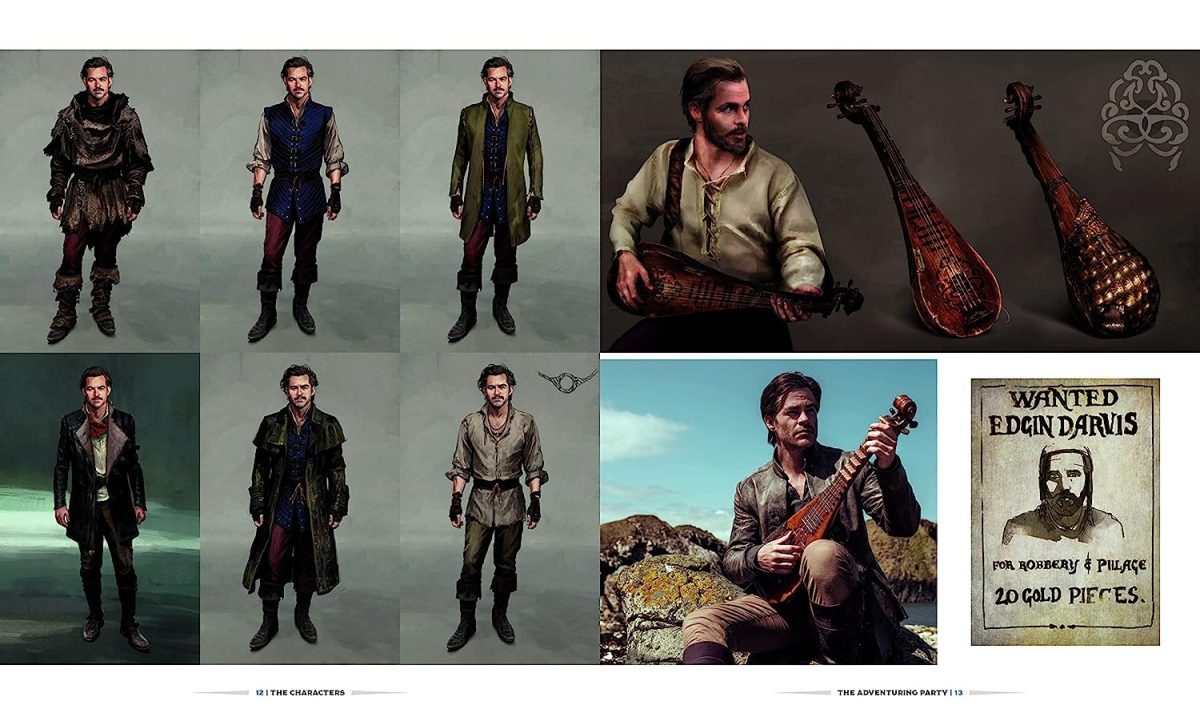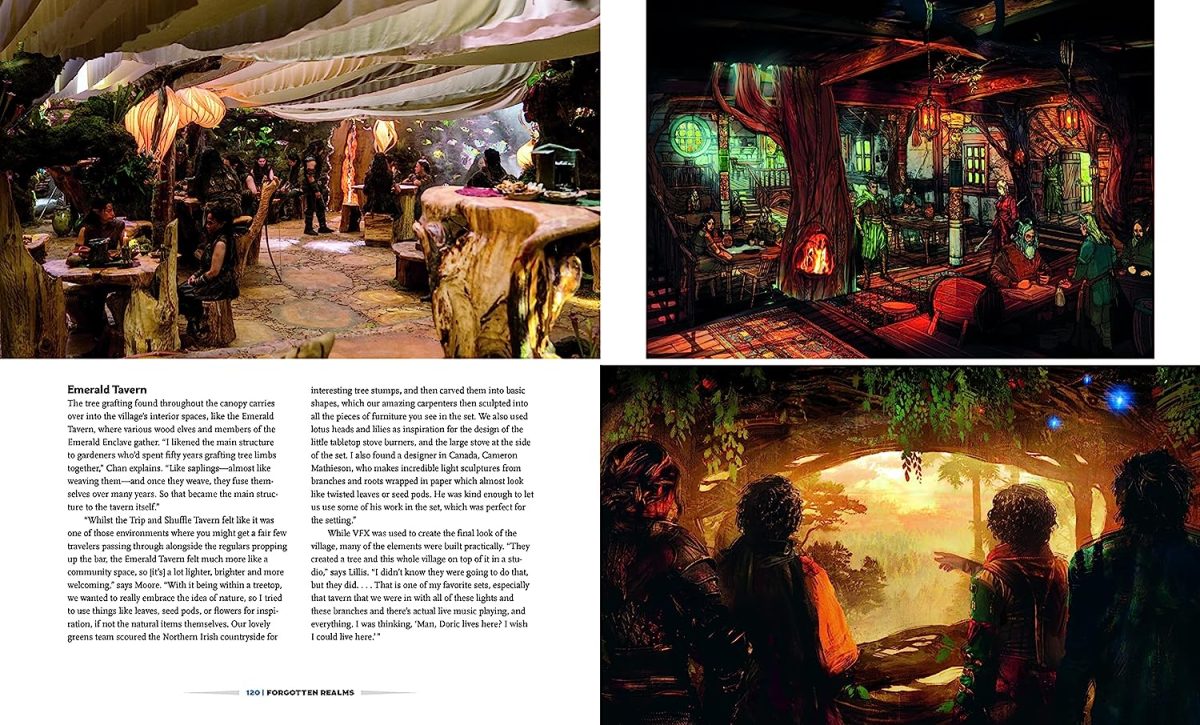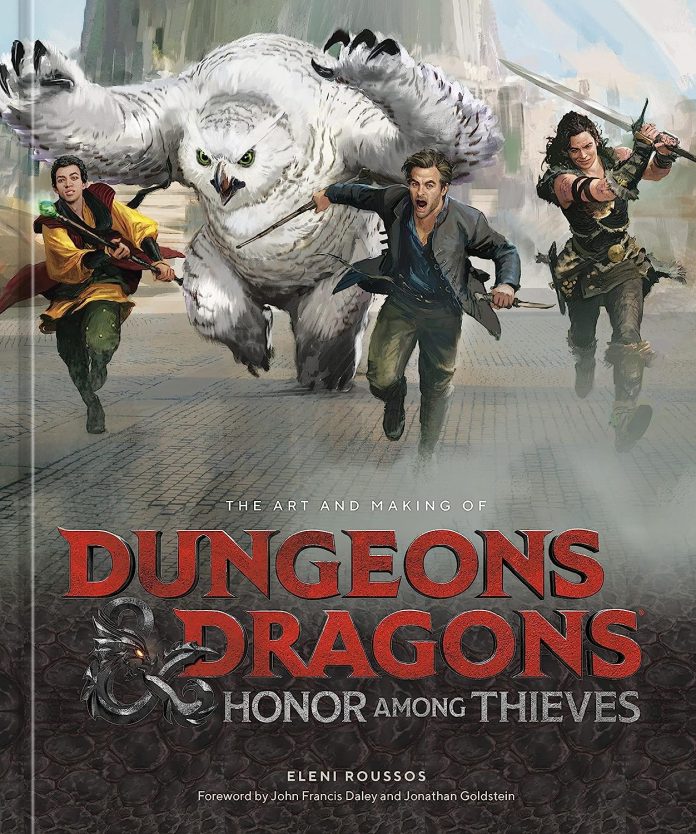This isn’t as big as some Art/Making of books, especially when doing double duty, as this one does. This is an enjoyable read, however, and not just for Dungeons & Dragons fans. With a foreword by the filmmakers, John Francis Daley and Jonathan Goldstein, and an afterword by Jeremy Latcham, one of the producers, it splits the rest of its 197 pages into 4 sections:
- Creating the characters
- Bestiary
- Forgotten Realms
- The Magic of Filmmaking
The book is full of colourful illustrations from the concept art and storyboards for the film, as well as behind-the-scenes pictures and production art, doing an excellent job of using that art to illustrate the written content.
Each of the main characters, and a few others, get sections talking about their reason for being in the film, both from the film perspective and a D&D party perspective, and there are comments from the actors. The wizards at Legacy Effects get a lot of acknowledgement for their stunning work on producing practical effects for a number of the characters and creatures, so that the actors could act against them, rather than tennis balls on sticks, and both in the film and the behind the scenes images, their work is very impressive.
There is a lot of love for practical effects where possible in the movie that I think paid off very well, and that’s shown here. They also talk through the tricks and the work they used to make those members of the film’s cast that were intended to be different sizes film with the rest of the cast and then have the scenes updated to fit the ‘reality’ of D&D, which made the performances of the actors better. There are several warnings about the impracticality of Xenk Yendar’s costume in combat as an uncomfortable reality – Especially the cloak, as we have often been warned in a number of films!

The Bestiary doesn’t just talk about the creatures they included in the film, and why, but also how they included a number that are included in tapestries, or paintings, for example, to make the setting feel more real. There is also some discussion about a few of the beasts they didn’t include in the film, often because it would have been gratuitous and taken away from the story. When some are iconic Dungeons & Dragons monsters, this may have been a brave move, but maybe in a sequel? We can only wait and see.
In the Forgotten Realms section, they talk about the world of Faerun, and why they chose the areas for the film to take place they did. They also discuss how the film created some locations that would in turn be put into the D&D books by Wizards of the Coast once they agreed to them…. There are now opportunities for our own parties to cross over with the journeys of Edgin, Holda and even Forge! It’s also interesting to see the level of detail they put in, not just in terms of painting and furniture, but also making sure that markets had stalls selling classic adventurer gear like ropes, alchemy ingredients, tools, etc.

They finish the book by talking about the actual making of the film in more detail. They cover the logistics of making some of the scenes work without injuring people, and if possible being able to recreate them for filming at different angles or reshoots. This includes a lot of storyboards to help you to track the thinking and the hard work behind these, sometimes very quick scenes you might just take for granted.
Throughout the book, they make an effort to relate the making of the film to the playing of Dungeons & Dragons itself – The party creating their characters, choosing the setting, the DM interacting with the players to make things happen and even the emergent nature of the storytelling, wherein some parts of the film were better for things NOT working as planned and forcing them to adapt – At one point all hands on deck meant even the producers helped to carry a village 200 yards to shoot a scene from a different direction. If the characters rode uphill, it required the camera dolly’s engine to be running, which drowned out the actors, but letting it roll downhill with them not only allowed us to hear them, and the background noise of the setting, but even made for a better look to the scene they hadn’t considered.
Overall it was an enjoyable and informative read, and the quality throughout is good (Not always the case). If you’re a fan of these books, and the film, it’s a good addition. If you enjoyed the film, and like D&D, it’s interesting to see how they considered and worked with the ties between the game and the film, which was much better than some other efforts. I’d recommend this book.



